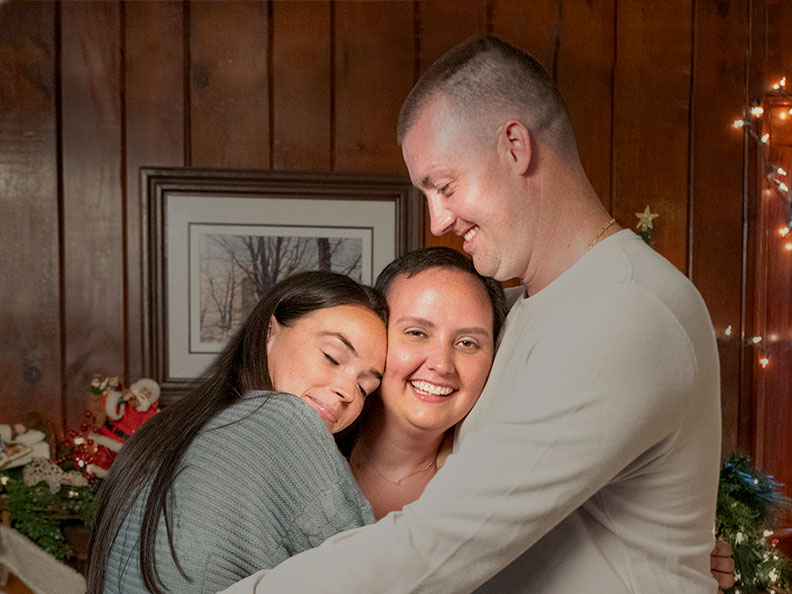Your gift is 100% tax deductible
Survival Rates for Childhood Non-Hodgkin Lymphoma
Survival rates are one way to get an idea of the outlook for children and teens with a certain type and stage of cancer. They can’t tell exactly what will happen with any person, but they may help give you a better understanding about how likely it is that treatment will be successful.
What is a survival rate?
Statistics on the outlook (prognosis) for a certain type and stage of cancer are often given as survival rates. For example, the 5-year survival rate is the percentage of people who live at least 5 years after being diagnosed with cancer. A 5-year survival rate of 80% means that an estimated 80 out of 100 people who have that cancer are still alive 5 years after being diagnosed. Of course, many of these people live much longer than 5 years.
Many cancer doctors prefer not to use the word “cure” when discussing cancer treatment and prognosis (outlook), because it can be hard to know for sure that all of the cancer is gone after treatment. But when it comes to children and teens with non-Hodgkin lymphoma (NHL), those who are still alive and free of lymphoma after 5 years are very likely to have been cured, as it’s rare for these cancers to return after this much time.
Survival rates don’t tell the whole story
Survival rates are often based on previous outcomes of large numbers of children who had the disease, but they can’t predict for sure what will happen in any particular child’s case. There are some limitations to keep in mind:
- The outlook for children and teens with NHL varies by the type and stage (extent) of the lymphoma. But other factors can also affect a child’s outlook, such as the location and size of the tumor(s), and how well the lymphoma responds to treatment. The outlook for each child is unique based on their circumstances.
- The numbers below are among the most current available. But to get these survival rates, doctors have to look at children who were treated at least several years ago. As treatments are improving over time, children who are now being diagnosed with NHL may have a better outlook than these statistics show.
Your child’s doctor can tell you how these numbers might apply to your child’s particular situation.
Survival rates for childhood non-Hodgkin lymphoma
Advances in treatment have increased the overall survival rates for children and teens with NHL dramatically in recent decades.
The ranges of numbers given below are based on the results of several studies that have used different treatment regimens or included slightly different groups of patients.
Lymphoblastic lymphoma
With intensive treatment, the long-term survival rate for children and teens with limited stage (stage I or II) lymphoblastic lymphoma is higher than 90%.
The long-term survival rate for more advanced (stage III or IV) lymphoblastic lymphomas is generally higher than 80%.
Burkitt and Burkitt-like lymphoma
Treatment of limited stage (stage I and II) Burkitt lymphomas is usually very successful, with a long-term survival rate of over 90%.
The long-term survival rate for children and teens with more advanced (stage III or IV) Burkitt lymphoma ranges from about 80% to 90%.
Diffuse large B-cell lymphoma
The long-term survival rate is over 90% for limited stage (stage I and II) diffuse large B-cell lymphoma (DLBCL).
The long-term survival rate for children and teens with advanced (stage III or IV) DLBCL ranges from about 80% to 90%.
Anaplastic large cell lymphoma
The long-term survival rate for limited stage anaplastic large cell lymphoma (ALCL) is about 90%.
ALCL is more likely to be advanced at the time it is diagnosed, for which the long-term survival rate is in the range of 60% to 75%.
Remember, all of these survival rates are only estimates – they can't predict what will happen with any child. We understand that these statistics can be confusing and may lead you to have more questions. Talk to your child's doctor if you'd like to get a better understanding of what these numbers mean.
- Written by
- References

The American Cancer Society medical and editorial content team
Our team is made up of doctors and oncology certified nurses with deep knowledge of cancer care as well as editors and translators with extensive experience in medical writing.
Gross TG, Kamdar KY, Bollard CM. Chapter 19: Malignant Non-Hodgkin Lymphomas in Children. In: Blaney SM, Adamson PC, Helman LJ, eds. Pizzo and Poplack’s Principles and Practice of Pediatric Oncology. 8th ed. Philadelphia Pa: Lippincott Williams & Wilkins; 2021.
National Cancer Institute Physician Data Query (PDQ). Childhood Non-Hodgkin Lymphoma Treatment. 2021. Accessed at https://www.cancer.gov/types/lymphoma/hp/child-nhl-treatment-pdq on June 10, 2021.
Smith MA, Seibel NL, Altekruse SF, et al. Outcomes for children and adolescents with cancer: Challenges for the twenty-first century. J Clin Oncol. 2010:28:2625–2634.
Termuhlen AM, Gross TG. Overview of non-Hodgkin lymphoma in children and adolescents. UpToDate. 2021. Accessed at https://www.uptodate.com/contents/overview-of-non-hodgkin-lymphoma-in-children-and-adolescents on June 10, 2021.
Last Revised: August 10, 2021
American Cancer Society medical information is copyrighted material. For reprint requests, please see our Content Usage Policy.
American Cancer Society Emails
Sign up to stay up-to-date with news, valuable information, and ways to get involved with the American Cancer Society.



